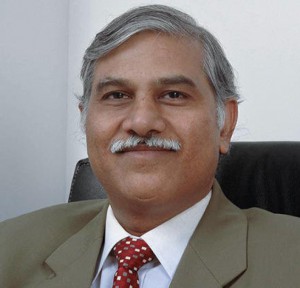Algo Trading: It Is Time To Understand What They Are

Explanation of Algorithmic, Algo and High Frequency Trading
“Algo trading is actually not as bad as it is made out to be,” says Praveen Gupta, a software provider in the algorithmic trading space.
What Is Algorithmic Trading?
Simply put, algorithmic trading system refers to the use of automation for trading in financial markets. This involves execution of a trading strategy using a computer program (algorithm). Earlier, these strategies were executed by humans. Use of automation removes the human emotion element to improve consistency and performance.
Algorithmic trading is used for faster identification of arbitrage opportunities, quick order execution, strategies looking to beat benchmarks like the S&P 500, (alpha seeking) and high frequency algorithm trading systems.
Are You Still Confusion?
In high-frequency trading (HFT), algorithmic systems interpret market signals and patterns. Trades are then executed and reversed within a fraction of a second, multiple times during the trading session to generate profits. HFT algorithmic trading systems target the most liquid segments of the market. Speed of execution is the top priority, and HFT uses direct electronic access to markets and co-location of servers to reduce the time taken to execute transactions.
How Is An Algo System Created?
The first step in creating an algorithm is the presence of a trading strategy. This trading strategy is then converted into a computer program (algo) with the help of a software expert who programs this strategy in a high-level computer language using the required parameters.
The algo trading strategy created is back-tested using historical data from the stock exchanges for efficiency. Once it begins live trading using the new algorithms, it takes a few weeks to stabilize the algo. All systems will encounter bugs, errors, and have a few unforeseen issues arise. But with a lot of hard work and testing, it can be ready to trade a more considerable amount of money.
Brokers offering algo trading services have to take prior approval from stock exchanges.
How Is An Algorithm Different From Human Intervention?
Every algo trading program has two parts to it. The first is identifying a buying or selling opportunity, which entails what to buy or sell (asset class- debt, equity, currency, and commodity) and when to buy or sell.
The second is the execution logic which defines how the trade will be executed. For example, what is the type of order to be used, at what levels are profits or losses taken, what is the stop-loss, and at what price is the stop-loss triggered and executed?
How Are Algo Trading Orders Routed And Where Does Your Software Fit In?
For brokers who have their own trading application, the software would sit between their application and the dealer terminal.
The algo trades are routed to the exchange through the broker’s application. The broker’s application consists of a data center, order routing system, order management system, and risk management system.
For brokers who use other applications, our software routes only the algo orders to the exchange while the non-algo orders will be routed through the existing trading application.
In short, algorithmic trading, algo trading, and high-frequency trading systems are automated systems that run a unique trade strategy.
ALGOTRADES – ALGO TRADING SYSTEM FOR INDIVIDUAL INVESTORS!
Chris Vermeulen
www.AlgoTrades.net

Leave a Reply
Want to join the discussion?Feel free to contribute!